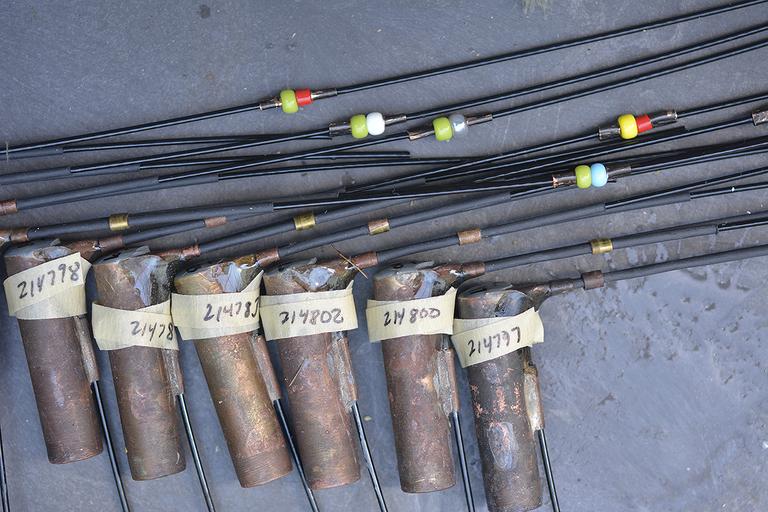MAKE A MEME
View Large Image

| View Original: | Radio_tags.jpg (1200x800) | |||
| Download: | Original | Medium | Small | Thumb |
| Courtesy of: | www.flickr.com | More Like This | ||
| Keywords: puerto rican parrot puertoricanparrot maricao puerto rico puertorico us fish and wildlife usfishandwildlife departamento recursos naturales departamentorecursosnaturales liberacion 2016 cotorra iguaca These are the radio tags that parrots wear around their necks. The brass case housing the battery and transmitter are hermetically sealed to withstand strong, aggressive bills. Each transmitter emits a frequency that helps us find the parrots whereabouts through the use of telemetry. The antenna is a stranded stainless steel cable covered with a black nylon coating. We place beads on the antenna with unique color combinations for each bird to help us identify each animal with binoculars. En Español: Estos son los "radio tags" que le ponemos a las cotorras al rededor de sus cuellos. El cilindro de cobre contiene una pequeña batería y un transmisor hermeticamente protegidos del fuerte y agresivo pico de las cotorra. El cable está echo de metal y cubierto con una capa de nylon. Colocamos cuentas en las antenas usando combinaciones de colores únicos para cada cotorra y asi facilitar el trabajo de identificar las cotorras con binoculares cuando ya estén libres. Photo by Jan Paul Zegarra, Biologist, USFWS Wednesday, November 23, 2016 Bosque del Estado, Maricao, Puerto Rico. These are the radio tags that parrots wear around their necks. The brass case housing the battery and transmitter are hermetically sealed to withstand strong, aggressive bills. Each transmitter emits a frequency that helps us find the parrots whereabouts through the use of telemetry. The antenna is a stranded stainless steel cable covered with a black nylon coating. We place beads on the antenna with unique color combinations for each bird to help us identify each animal with binoculars. En Español: Estos son los "radio tags" que le ponemos a las cotorras al rededor de sus cuellos. El cilindro de cobre contiene una pequeña batería y un transmisor hermeticamente protegidos del fuerte y agresivo pico de las cotorra. El cable está echo de metal y cubierto con una capa de nylon. Colocamos cuentas en las antenas usando combinaciones de colores únicos para cada cotorra y asi facilitar el trabajo de identificar las cotorras con binoculares cuando ya estén libres. Photo by Jan Paul Zegarra, Biologist, USFWS Wednesday, November 23, 2016 Bosque del Estado, Maricao, Puerto Rico. | ||||